Stereo OR MONO microphone in Parabola?
Which type of microphone inside the parabolic dish: Stereo, Mono, or Twin Mono?
As already stated by Wahlström (Sten Wahlström, Swedish Radio, Karlstad, Sweden, JAES Volume 33 Issue 6 pp. 418-429; June 1985), acquire a stereo effect using a parabolic microphone system is possible, but only for everything on the sides of the focal point of the parabola. The main subject in the center will be recorded completely in monophony. It may be the listening will have a sort of “ping-pong” effect, something common to all stereo recordings made using a short distance from the two right and left microphones, and the stereo baffle in the parabolic microphone does not escape this rule. Definitely, the stereophonic effect will be given only by the background of voices that surround the main monophonic subject.
To acquire a good stereophonic effect using a parabolic reflector, an effect that is as truthful as possible, the main subject may be recorded slightly off-axis with respect to the focal point of the parabola. In this way, even the target subject of our recording will contribute to the stereophony of the sound stage, thus giving our Soundscape an additional feeling of truthfulness.
An advantage of the stereo reception using a parabolic dish is the virtual (and even real!) immersion in the sound stage, so it will be very easy to track a subject moving in any direction. In fact, if our singer moves to the right, we will hear the signal move in that direction, and therefore it will become easy to direct the dish to that side, which is practically impossible if we use a Mono microphone instead of a Stereo.
NOTE – The correct use of a parabolic microphone without the use of stereo headphones is impossible. I would like to give a recommendation: never use the intraural earphones, they do not isolate properly from the external environment, creating a mix for listening between the signal in the headphones and what is heard externally, with a general sense of perceived confusion. Furthermore, it is very difficult for these small earphones to reproduce the low frequencies, so most of the times we will not be able to assess whether our recording will be without unexpected background noises due for example to an involuntary movement of our hand, something will ruin inexorably our recording. Believe me, it is not easy to stand still with your hand extended to support the weight of the dish for several minutes, no matter how slight it is!
And here we could open a new chapter, on the use of a stand for a perfect parabolic microphone recording. With a stable subject singing from a perch, using a tripod for photographic use is the best thing. However, if we find ourselves having to track an individual who emits his own note of call and/or singing while moving continuously within the canopy of a tree, a bush, or in the sky, using a tripod can be difficult; after a while you feel the need to have to remove the parabolic microphone from the stand, to follow the subject by directing the dish only with a slight twist of the wrist. A compromise solution could be the use of a light monopod.
Ultimately, is it better to record in stereo or mono?
Why use a Mono type microphone, if Stereo gives these advantages?
If we want to get the spectrogram from a recording, in order to be able to study the song or a call of a species, having a signal as “clean” as possible is actually the best thing. The use of a Monophonic microphone, inside a parabolic dish, contributes in a decisive way to obtaining a perfect spectrogram. Even better if we use a so-called Twin Mono microphone, that is a microphone equipped with a double microphone capsule, one of different type for each of the two channels. We can use an omnidirectional capsule on one channel and a unidirectional one (cardioid) on the other. This will give the possibility of obtaining a more isolated signal from the background noise with the use of a cardioid capsule, or a richer signal at low frequencies using an Omnidirectional capsule. The choice for one or the other channel will depend on a set of aspects that will have to be evaluated at the time of the playback analysis. Not infrequently this possibility of recording on two separate channels, with capsules with different polar diagrams, will allow us to save a track that could otherwise be ruined by a signal saturation. See this example!
The Telinga Twin Science is a great example of a Twin Mono parabolic microphone. Another valid realization is that of Dodotronic with HiSound Mono.
Quale tipologia di microfono all’interno del disco parabolico: Stereo, Mono, o Twin Mono?
Come già descritto da Wahlström (Sten Wahlström, Swedish Radio, Karlstad, Sweden, JAES Volume 33 Issue 6 pp. 418-429; June 1985), ottenere l’effetto stereo in parabola è possibile, ma solamente per tutto ciò che sta ai lati del punto focale della parabola. Il soggetto principale ripreso al centro, risulterà registrato completamente in monotonia. All’ascolto si potrà avere una sorta di effetto “ping-pong”, cosa comune a tutte le registrazioni stereo effettuate con le capsule microfoniche posizionate a breve distanza l’una dall’altra, e il microfono stereo a paletta inserito nel disco parabolico non sfugge a questa regola. In definitiva, l’effetto stereofonico sarà quindi dato unicamente dal sottofondo di voci che contornano il soggetto monofonico principale.
Per ottenere un buon effetto stereofonico, utilizzando un riflettore parabolico, un effetto che sia il più veritiero possibile, si può registrare il soggetto principale leggermente fuori asse rispetto al punto focale della parabola. In questo modo, anche il soggetto target della nostra registrazione andrà a concorrere alla stereofonia della scena sonora, dando così al nostro Soundscape un ulteriore grado di veridicità.
Un vantaggio della ricezione stereo in parabola è che, trovandosi virtualmente (e di fatto!) immersi nella scena sonora, risulterà molto agevole seguire un soggetto mentre si sposta in qualsiasi direzione. Se infatti il nostro cantore si sposterà verso destra, sentiremo il segnale spostarsi in quella direzione, e quindi diverrà naturale direzionare la parabola proprio da quella parte, cosa praticamente impossibile se si utilizza un microfono di tipo Monofonico anziché Stereo.
NOTA – A prescindere dal fatto che il corretto utilizzo di un microfono parabolico senza l’uso di cuffie stereofoniche è impossibile, mi sento di dare una raccomandazione: mai utilizzare gli auricolari di tipo intraurale, non isolano a dovere dall’ambiente esterno, creando all’ascolto un mix tra il segnale in cuffia e ciò che si sente esternamente, con un generale senso di confusione percepito. Inoltre, ben difficilmente questi piccoli auricolari riprodurranno le basse frequenze, per cui la maggior parte delle volte non saremo in grado di valutare se la nostra registrazione risulterà priva di inaspettati rumori di fondo dovuti ad esempio ad un movimento involontario della nostra mano, la qualcosa rovinerà inesorabilmente la nostra registrazione. Credetemi, non è facile rimanere fermi immobili con la mano tesa a sorreggere per diversi minuti il peso della parabola, per quanto leggera essa sia!
E qui potremmo aprire un nuovo capitolo, sull’utilizzo di uno stativo per una perfetta registrazione in parabola. Con un soggetto stabile in canto da un posatoio, utilizzare uno stativo per uso fotografico è la cosa migliore. Se però ci troviamo a dover seguire un individuo che emette le proprie note di richiamo e/o canto mentre si sposta continuamente all’interno della chioma di un albero, di un cespuglio, o ancora in cielo, utilizzare un treppiede può risultare difficile; dopo un po’ si sente la necessità di dover staccare il microfono parabolico dallo stativo, per seguire il soggetto direzionando la parabola unicamente con una leggera torsione del polso. Una soluzione di compromesso potrebbe essere l’utilizzo di un leggero monopiede.
In definitiva, meglio registrare in Stereo o in Mono?
Perché allora utilizzare un microfono di tipo Mono, se lo Stereo dà questi vantaggi?
Qualora si volesse ottenere il sonogramma da una registrazione, al fine di poter studiare il canto o un richiamo di una data specie, l’avere un segnale il più “pulito” possibile è di fatto la cosa migliore. L’utilizzo di un microfono Monofonico, all’interno del nostro disco parabolico, contribuisce in maniera decisiva all’ottenimento di un perfetto sonogramma. Meglio ancora se utilizziamo un cosiddetto microfono Twin Mono, ossia un microfono dotato di doppia capsula microfonica, una di tipo diverso per ognuno dei due canali. Potremo così utilizzare ad esempio una capsula omnidirezionale su un canale e una unidirezionale (cardioide) sull’altro. Ciò darà la possibilità di ottenere un segnale più isolato dai rumori di sottofondo con l’utilizzo di una capsula cardioide, oppure un segnale più ricco alle basse frequenze utilizzando una capsula Omnidirezionale. La scelta per l’uno o l’altro canale dipenderà da un insieme di aspetti che andranno valutati al momento del cosiddetto “sbobinamento”, ossia in sede di riascolto per l’analisi del segnale registrato. Non di rado questa possibilità di registrazione su due canali separati, con capsule a differente diagramma polare, ci permetterà di poter salvare una traccia che diversamente poteva risultare rovinata da una saturazione del segnale. Vedi questo esempio!
Il Telinga Twin Science è un ottimo esempio di microfono parabolico Twin Mono. Altra valida realizzazione è quella di Dodotronic con l’HiSound Mono.
Hippolais icterina
11 May 2019 – recorded with double PZM microphone with 2+2 EM 172 capsules Primo microphone in parabolic dish 53 cm, Roland R05 recorder; slight wind in the leaves of a oak where the subject was singing up in the canopy. In this season the singing is not yet a complete full song.
Blackcap and Great Tit
Blackcap and Great Tit, Singing at Dawn – Sony PCM D50 ME66 Matched Pair Microphnones
There is a noticeable Hiss with the two Sennheiser ME66’s 1.5 Volt battery powered. Unfortunately, at least with my two ME66’s, the Hiss exists, probably due to a problem with the two K6 power supplies; that has already been reported on the web by some users. Powered the ME66’s via Ph 48V recordings result less noisy.
Analog Tape Recording Vs. Digital Recording
This recording clearly highlights the problem of the background noise caused by the magnetic tape hiss, completely solved with the advent of digital recording. From 2’07” begins the digital stereo recording performed using an Olympus LS5 and Parabola HiSound stereo with a disc of 53 cm; the initial part instead is of April 1986 recorded with a cassette stereo recorder Sony WM-D6, parabola in fiberglass Rochè 53 cm and a Sony dynamic microphone.
Lessinia Soundscape
This entry has been awarded runner up in the Habitat class of the 2012 WSRS Wildlife Sound Recording Society sound competition.
This is a file that I recorded on May 28, 2012 in Italy, in the mountains near Verona, Lessinia, at 1400 meters above sea level. The soundscape is very angle limited because captured with a parabola stereo using a Telinga Universal, were inside I placed a DIY 3+3 parallel connected EM 172 Primo Stereo microphones.
No processing was done in post production.
The species recognizable are: Turdus viscivorus, Parus ater, Phoenicurus phoenicurus, Cuculus canorus. Captured holding the parabola by hand, no tripod at all.
These the coordinates: 45.659824,11.085538
BEWARE: the Roland R05 is a digital recorder very FRAGILE both for the 3.5 mm jack and the electronic board, much better and stronger is the Sony M10. This is my opinion after using both recorders.
TETA Microphone
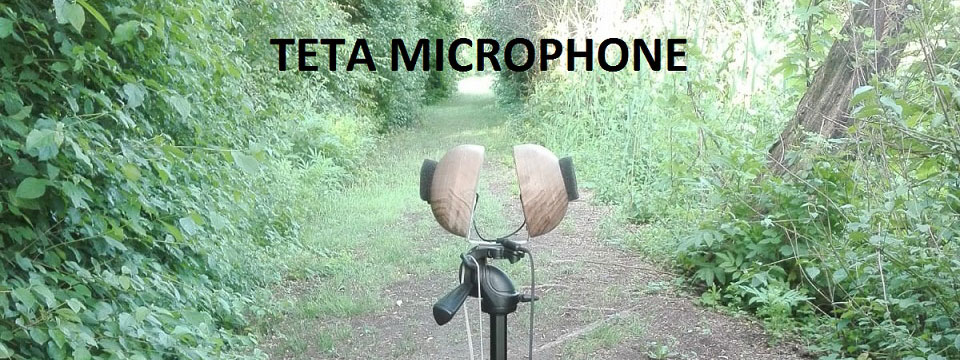
Test with a song of Blackcap, for a new stereo microphone system called “TETA”, that allows reception of the stereophonic image to cover fully 360-degree soundscape, a degree that can be varied by rotating the microphone heads to obtain a classic ORTF front stereo image. The capsules are spaced 17 cm from each other.
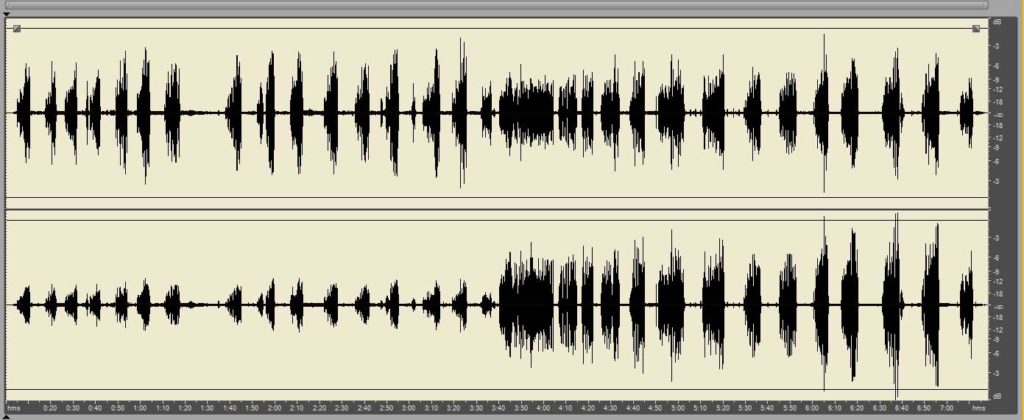
Looking at the waveform, the difference between the two halves of the file appears clear, with the subject at first positioned decidedly to the left with respect to the microphonic apparatus, then at 3’40” moved a little further to the right than the center.
Here a tested AOM 5024L microphone capsule. This capsule is comparable in size and sound performance to the most known and widespread Primo EM 172 (now EM 272).
The AOL is more sensitive than the Primo capsule, however, in some uses, the lower sensitivity and the higher overload limit of the Primo, 119 dBspl vs 110 dB, allows a larger headroom, e.g. when used in a parabola.
See also: https://www.naturesound.it/2019/08/02/serata-estiva-con-ortotteri/
and: https://www.naturesound.it/2019/08/03/nightingales-duet-song-in-a-marshy-environment/
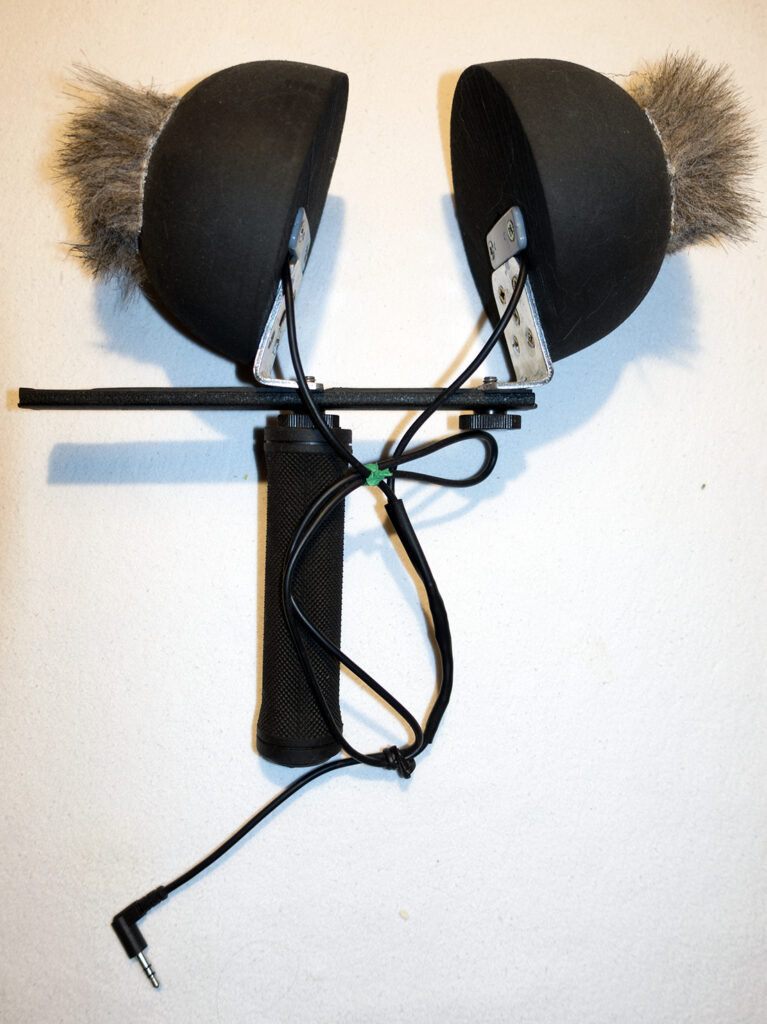
For more comfortable portability and use on-the-go, I also built a lightweight version, using an EVA block for Yoga. The half sphere shape was obtained by means of a wood lathe and are rotatable to obtain a degree of angolation that can be varied.
Bombina variegata

Yellow-bellied toad

Full moon, midnight, slightly windy weather in Monte Baldo, Valfredda, Verona, Italy, 11 July 2014.
At 1300 meters of altitude, in a small pond, I recorded a chorus of Yellow-bellied toad and European tree frog while an uncommon bat, a Tadarida teniotis, flying over the wetland (see the lines call at about 10 KHz).
In the background is a chorus of field crickets.
I used a DIY parabolic stereo microphone with 3+3 Primo EM172 capsules parallel connected, inside a Telinga parabolic Dish.
I wish to thank Paolo Cugildi for the friendly and warm welcome in Malga Natura and Federico Novelli for the assistance during the recording.
Otus scops – Chorus at dawn
Eurasian Scops
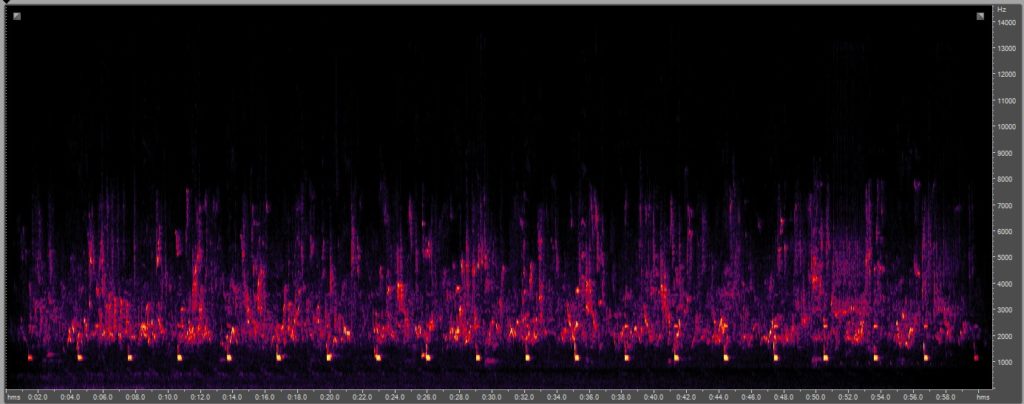
Mole Cricket
Mole Cricket, song recorded using a Telinga Pro5 Twin Mono
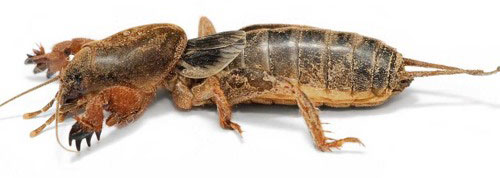
Song emitted from the burrow cavity recorded on 22 May 2002 using a parabolic microphone Telinga Twin Mono.
It can be confused with the song of the Green toad, Bufotes viridis
Canto emesso dalla cavità tana registrato il 22 maggio 2002 utilizzando un microfono parabolico Telinga Twin Mono.
Può essere confuso col canto del Rospo smeraldino, Bufotes viridis.

Commenti recenti